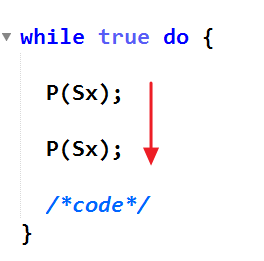Option (A):

$\Rightarrow$ Deadlock possible
Option (B) . Same as Option (A). Deadlock possible.
Option (C):
No need to think of another process to get a deadlock situation:

$\Rightarrow$ Both processes will be blocked once they start.
Option (D) is ok ! as far as deadlock is concerned.